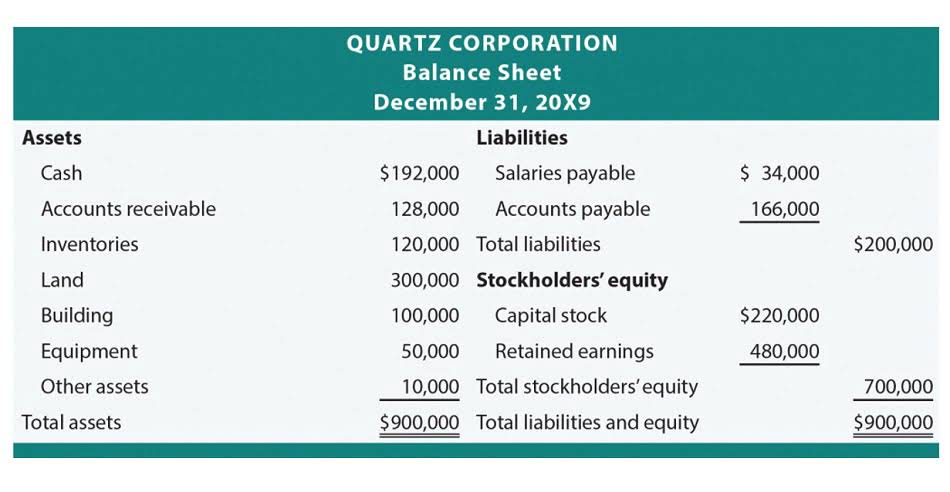What Is R&D in Accounting? Costs and Tax Credits

You should use the relevant contact us email address and copy in your customer compliance manager (CCM). Find out what information you need to send HMRC before you make a claim for R&D Corporation Tax relief. Entities should document the basis for their accounting policy choice, and, where appropriate, discuss with their external auditors. We are currently looking for exceptional employees to join our team in both accounting & administration. As one of our administration assistants, Keira works closely with Lana and our receptionist Olivia to ensure timely and accurate completion of all administration tasks within the office. Improving financial metrics through capitalization helps companies identify areas of improvement, make better strategic decisions, and even attract investors who want to get in on the success.
Accurate Cost Allocation
Contrary to this point of view, Zimmerman (2013) argues that accounting policies have negligible real effects. Thus, whether capitalisation or expensing affects the amount of firms’ R&D expenditures is an important, unanswered question that we address. Under Item 303(b) of Regulation S-K, Management’s Discussion and Analysis (MD&A) must address any material changes in results of operations, including R&D expense fluctuations. The SEC encourages registrants to provide meaningful disaggregation in these disclosures—breaking down R&D costs by product line, project, or nature of the expense (e.g., internal vs. external spend). In recent years, comment letters have frequently pushed companies to provide greater transparency in this area, especially when R&D spending trends materially shift or diverge from prior periods. However, if that same intangible asset is acquired through an asset acquisition, the entity must assess whether it has alternative future use.
What are the Benefits of Proper Accounting Treatments for R&D Tax Relief?
For accounting periods aligned with the accounting period of the claimant, use the exact figures for that accounting period. R&D can be the key to survival and gives companies a shot at staying ahead of the competition and being relevant for years to come. However, it can also be costly to research, test, and implement, isn’t guaranteed to succeed, and often needs to be recorded as an expense rather than a capitalized cost. R&D expenses are usually listed on a company’s income statement in the year they are incurred.
How R&D Costs are Accounted For
- Not surprisingly, the expansive nature of this kind of work requires that corporate tax departments do their best to leverage technology to ensure proper compliance with the tax code.
- This conservative approach ensures companies maintain accurate and consistent reporting, capturing the true nature of R&D as an uncertain yet essential investment in future growth.
- After working for a number of firms in Toowoomba, David joined R & D Accounting as a director in 2006.
- Businesses undertake R&D with the expectation that it might lead to future revenue or cost savings, but the path from initial research to commercial success is often unclear.
- This means the work should go beyond mere cosmetic changes or routine updates, focusing instead on substantial enhancements that offer new capabilities or efficiencies.
- Accurate allocation of R&D costs is essential for a clear financial picture and informed decision-making.
There are various R&D capitalization rules organizations must follow, as well as specifics on capitalizable vs. non-capitalizable costs. As discussed above, R&D capitalization improves financial metrics, including profitability. Better financial metrics enhance investor confidence, which can inspire them to invest in your company, helping you reach your growth goals. While R&D capitalization has benefits, such as boosting long-term profitability, it’s also a confusing process that, if done wrong, could derail your R&D investments. Below is a break down of subject weightings in the FMVA® financial analyst program.

However, under GAAP, for accounting purposes, R&D costs must be expensed in the year they were accrued, with some notable exceptions, of course. The process of establishing technical feasibility for products or services available for sale will vary by industry and differences in the development cycle or regulatory environment should be carefully evaluated. Research https://berrasigortacilik.com.tr/2022/10/03/14-1-retained-earnings-entries-and-statements/ and Development (R&D) refers to the systematic pursuit of new knowledge, products, or processes that result in innovation. Materials and supplies consumed in the R&D process form another substantial cost component. This includes the cost of raw materials used in experiments, the development of prototypes, and testing procedures. For instance, a pharmaceutical company would include the cost of chemicals used in drug formulation, while a technology firm would account for components used in building new device prototypes.
- Expensing R&D costs directly reduces a company’s reported profit, and no corresponding asset is typically recorded on the balance sheet for the R&D efforts themselves.
- This can be advantageous for companies seeking to raise capital or negotiate better terms with creditors.
- Countries like Canada and the United Kingdom offer generous R&D tax incentives, which can include refundable tax credits or enhanced deductions.
- Accurate accounting for R&D expenses is critical for compliance and can have significant tax benefits as well as financial reporting and operational implications.
- But while the outcomes of R&D can transform markets, accounting for these costs often presents significant complexity.
We and our partners process data to provide:

Utilizing project management software like Jira or Asana can aid in maintaining and organizing these technical documents. Understanding the real effects of accounting policies is a r&d accounting fundamental issue for both academics and policymakers. While researchers have examined the economic consequences of various accounting policies, there is no reliable evidence for research and development (R&D). The accounting policy issue is especially important for R&D, because of concerns that the accounting method may affect the amount of firms’ R&D investments, and thereby affect innovation and economic growth.
- Depreciation of equipment and facilities used exclusively for R&D purposes is also an included expense.
- Under IFRS, research costs are expensed, but development costs can be capitalized once certain criteria (like demonstrating the product’s viability and the intention to complete and sell the product) are met.
- These arrangements are frequently constructed as limited partnerships, where a related party fulfills the role of general partner.
- If you’re making your first claim, you may be able to apply for advance assurance.
- The decision often hinges on a company’s financial strategy and its expectations for future profitability.
- This phase encompasses activities like the conceptual formulation, design, and testing of product alternatives, constructing prototypes, and operating pilot plants.
- If your company and project are eligible to claim R&D tax relief for small and medium-sized enterprises, you can apply for advance assurance to find out if your claim will be accepted.

These expenses are often reported for accounting purposes on the income statement. Navigating the tax implications of R&D activities is critical for businesses looking to maximize their innovation investments. The U.S. Internal Revenue Code provides the Research and Experimentation Tax Credit under IRC QuickBooks Accountant Section 41, allowing businesses to reduce their federal tax liability by a percentage of qualifying research expenses. These expenses include wages, supplies, and contract research costs, with the credit calculated based on increased R&D spending compared to a base amount.


Lascia un Commento
Vuoi partecipare alla discussione?Sentitevi liberi di contribuire!